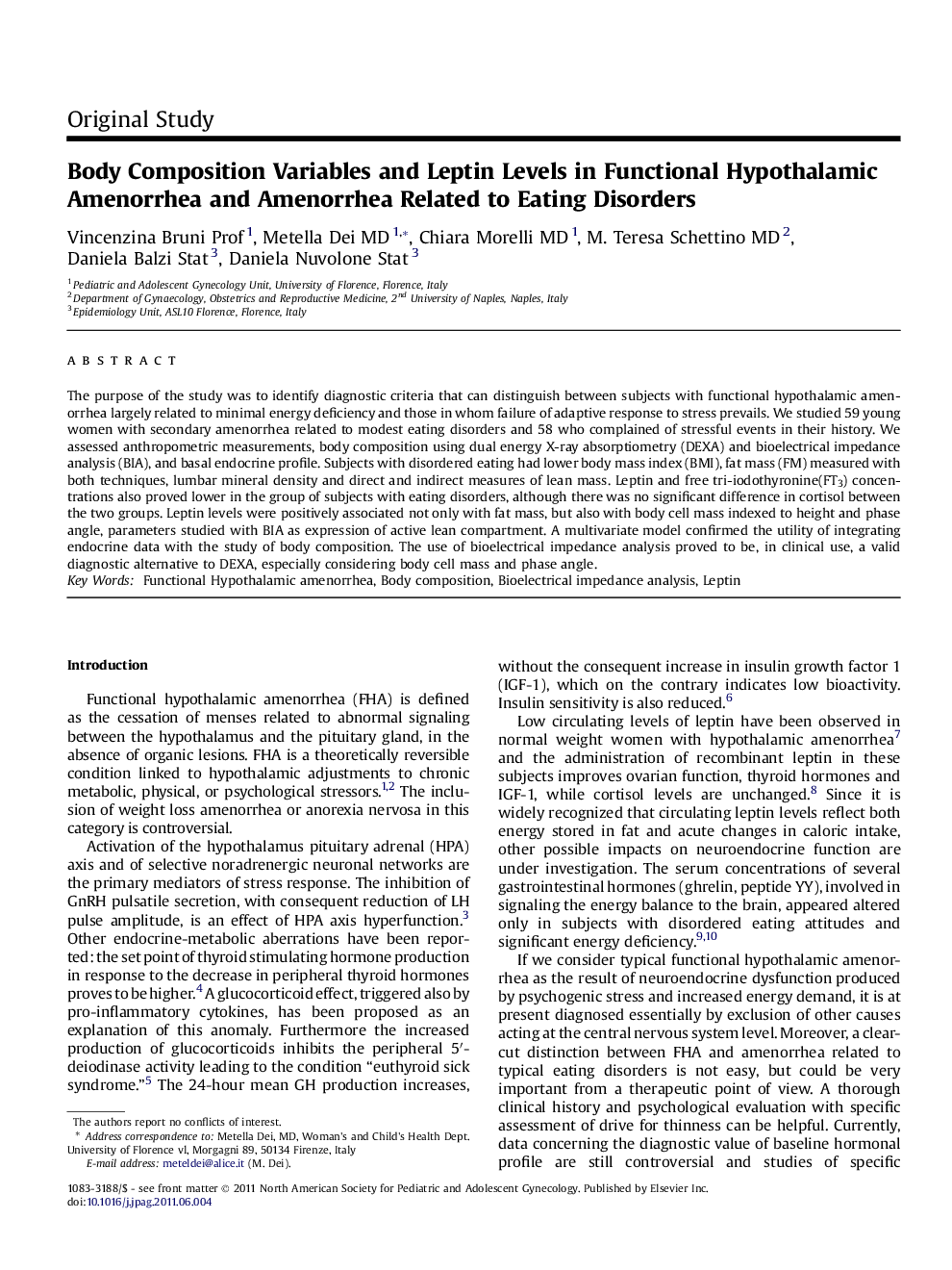| Article ID | Journal | Published Year | Pages | File Type |
|---|---|---|---|---|
| 3963007 | Journal of Pediatric and Adolescent Gynecology | 2011 | 6 Pages |
The purpose of the study was to identify diagnostic criteria that can distinguish between subjects with functional hypothalamic amenorrhea largely related to minimal energy deficiency and those in whom failure of adaptive response to stress prevails. We studied 59 young women with secondary amenorrhea related to modest eating disorders and 58 who complained of stressful events in their history. We assessed anthropometric measurements, body composition using dual energy X-ray absorptiometry (DEXA) and bioelectrical impedance analysis (BIA), and basal endocrine profile. Subjects with disordered eating had lower body mass index (BMI), fat mass (FM) measured with both techniques, lumbar mineral density and direct and indirect measures of lean mass. Leptin and free tri-iodothyronine(FT3) concentrations also proved lower in the group of subjects with eating disorders, although there was no significant difference in cortisol between the two groups. Leptin levels were positively associated not only with fat mass, but also with body cell mass indexed to height and phase angle, parameters studied with BIA as expression of active lean compartment. A multivariate model confirmed the utility of integrating endocrine data with the study of body composition. The use of bioelectrical impedance analysis proved to be, in clinical use, a valid diagnostic alternative to DEXA, especially considering body cell mass and phase angle.
